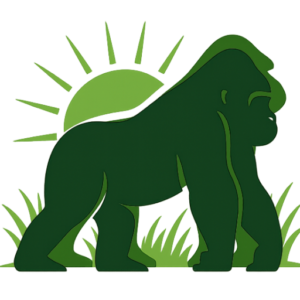African Safari Costs – How Much Does an African Safari Really Cost?
Introduction to African Safari Pricing
An African safari is one of life’s greatest travel experiences — a journey into the heart of the wild, where golden savannahs stretch to the horizon, lions roar at dusk, and elephants roam freely beneath the setting sun. Yet one of the most common questions travelers ask before planning is: “How much does an African safari cost?”
The truth is, safari pricing varies widely depending on the destination, level of comfort, duration, and the kind of experience you’re after. A safari can range from an affordable adventure in a tented camp to a luxurious stay in a private game reserve complete with personal guides and infinity pools overlooking watering holes. Understanding the cost breakdown helps you plan wisely and ensures your journey matches both your dreams and your budget.
What Determines the Cost of an African Safari
The price of a safari depends on several key factors:
-
Destination and Country: Some countries, like Tanzania and Botswana, are naturally more expensive due to conservation fees, park regulations, and the remoteness of lodges. Others, like Uganda or Kenya, offer a wider range of budget and mid-range options.
-
Type of Safari: Costs differ depending on whether you’re doing a group safari, private guided safari, or self-drive adventure.
-
Season of Travel: Prices rise in the dry season (peak safari time) when wildlife viewing is best, and drop during the rainy or shoulder seasons.
-
Accommodation Level: From basic campsites to world-class luxury lodges, your accommodation choice has a huge impact on price.
-
Duration: The longer you stay, the more you spend on park fees, meals, and transport.
-
Transport: Fly-in safaris (using bush planes) are more expensive than driving safaris, but save time and provide stunning aerial views.
Average Safari Costs by Budget Type
Budget Safaris (Approx. $200 – $400 per person per day)
Budget safaris focus on authentic, affordable experiences. Travelers stay in basic tented camps, guesthouses, or simple lodges. Game drives are often shared with other guests, and meals are hearty but simple. Transportation usually involves overland vehicles rather than bush flights.
These safaris are common in Uganda, Kenya, and Tanzania, and ideal for solo travelers or backpackers who want to experience wildlife without luxury trimmings. In Uganda, for example, a three-day gorilla trekking safari can start from around $1,000 – $1,200 per person, inclusive of permits and accommodation.
Mid-Range Safaris (Approx. $450 – $800 per person per day)
Mid-range safaris strike a balance between comfort and cost. Travelers stay in comfortable lodges or tented camps with en-suite bathrooms, enjoy personalized service, and often travel in smaller groups.
These safaris offer good value, with experienced guides, flexible itineraries, and comfortable vehicles. In Kenya or Tanzania, a mid-range safari might include visits to the Serengeti, Masai Mara, or Ngorongoro Crater, costing about $2,500 – $4,000 per person for a 5–7 day trip.
Luxury Safaris (Approx. $900 – $1,800+ per person per day)
Luxury safaris are designed for travelers seeking exclusivity, comfort, and personalized attention. Accommodations include five-star lodges or private camps with private plunge pools, gourmet dining, and top-class guiding. Many luxury safaris include fly-in transfers between parks, private vehicles, and custom experiences like hot-air balloon rides or bush dinners.
Luxury safaris in Botswana’s Okavango Delta, Tanzania’s Serengeti, or Rwanda’s Volcanoes National Park can cost anywhere from $7,000 to $15,000 per person for a 7-day itinerary. Rwanda, for instance, is known for its high-end gorilla trekking lodges such as Bisate, Singita Kwitonda, and One&Only Gorilla’s Nest, where nightly rates often exceed $1,500 per person.
Ultra-Luxury & Exclusive Safaris (From $2,000+ per person per day)
At the very top of the scale are ultra-luxury safaris — fully private, tailor-made expeditions with exclusive-use lodges, private aircraft, and top-tier naturalist guides. These safaris often combine multiple countries, including Kenya, Tanzania, Botswana, South Africa, and Zambia, and may include private conservation experiences, helicopter rides, and access to remote reserves.
This level of safari is ideal for honeymooners, VIP travelers, or families wanting complete privacy and personalization.
Average Safari Costs by Destination
Uganda
Uganda safaris are relatively affordable compared to other gorilla destinations. Gorilla trekking permits cost $800, while general safari packages in parks like Murchison Falls or Queen Elizabeth National Park average $250 – $700 per person per day, depending on comfort level.
Rwanda
Rwanda positions itself as a luxury gorilla destination. Gorilla permits cost $1,500, and most lodges near Volcanoes National Park cater to high-end travelers. Expect total costs of $1,000 – $1,800 per day for a premium gorilla trekking experience.
Kenya
Kenya offers safaris for every budget, from camping in the Masai Mara to luxury lodges in Amboseli or Laikipia. Budget safaris start at $250 per person per day, mid-range at $500–$700, and luxury safaris from $900+ per day.
Tanzania
Tanzania’s safaris are often slightly pricier due to park fees and distances between destinations. A mid-range safari covering Serengeti, Ngorongoro Crater, and Tarangire costs around $600–$900 per person per day, while luxury options easily exceed $1,200 daily.
Botswana
Botswana is renowned for its exclusive, low-impact tourism model. With private concessions and fly-in lodges, safaris here are luxurious but costly — typically $1,000 to $2,500 per person per day. The Okavango Delta and Chobe National Park are highlights for discerning travelers.
South Africa
South Africa offers some of the most accessible and affordable safaris, especially in Kruger National Park and surrounding private reserves. Self-drive options and a wide accommodation range make it ideal for all budgets. Costs range from $150 per day for budget travelers to $1,000+ per day for luxury private lodges like Sabi Sabi or Singita.
Additional Safari Expenses
Beyond accommodation and transport, several additional costs affect your overall safari budget:
-
Park Entry Fees: Ranging from $35 to $100 per day per person depending on the park.
-
Gorilla or Chimpanzee Permits: $800 in Uganda, $1,500 in Rwanda, $250 in Congo for gorillas.
-
Domestic Flights: $200–$400 per person for bush flights between parks.
-
Tips and Gratuities: Recommended at $10–$20 per guest per day for guides and staff.
-
Travel Insurance and Visas: Always include comprehensive coverage for medical and evacuation.
How to Save on Safari Costs
You can experience Africa’s magic without breaking the bank by traveling strategically:
-
Choose shoulder seasons (April–May or November) when lodges offer discounts.
-
Opt for driving safaris instead of fly-ins.
-
Combine group tours with a few private experiences.
-
Stay longer in fewer parks to reduce transfer costs.
-
Mix budget and mid-range accommodations across your itinerary.
Final Thoughts
The cost of an African safari varies as widely as the landscapes themselves. Whether you spend $250 a day on a camping adventure in Kenya or $2,000 a night in a luxury Botswana lodge, the essence of safari remains the same — the raw, unfiltered connection with nature.
A safari isn’t defined by price, but by moments: the first lion you see at dawn, the rumble of elephants through acacia trees, or the quiet gaze of a mountain gorilla. Whatever your budget, Africa’s wilderness offers experiences that are priceless — memories that stay with you forever.





